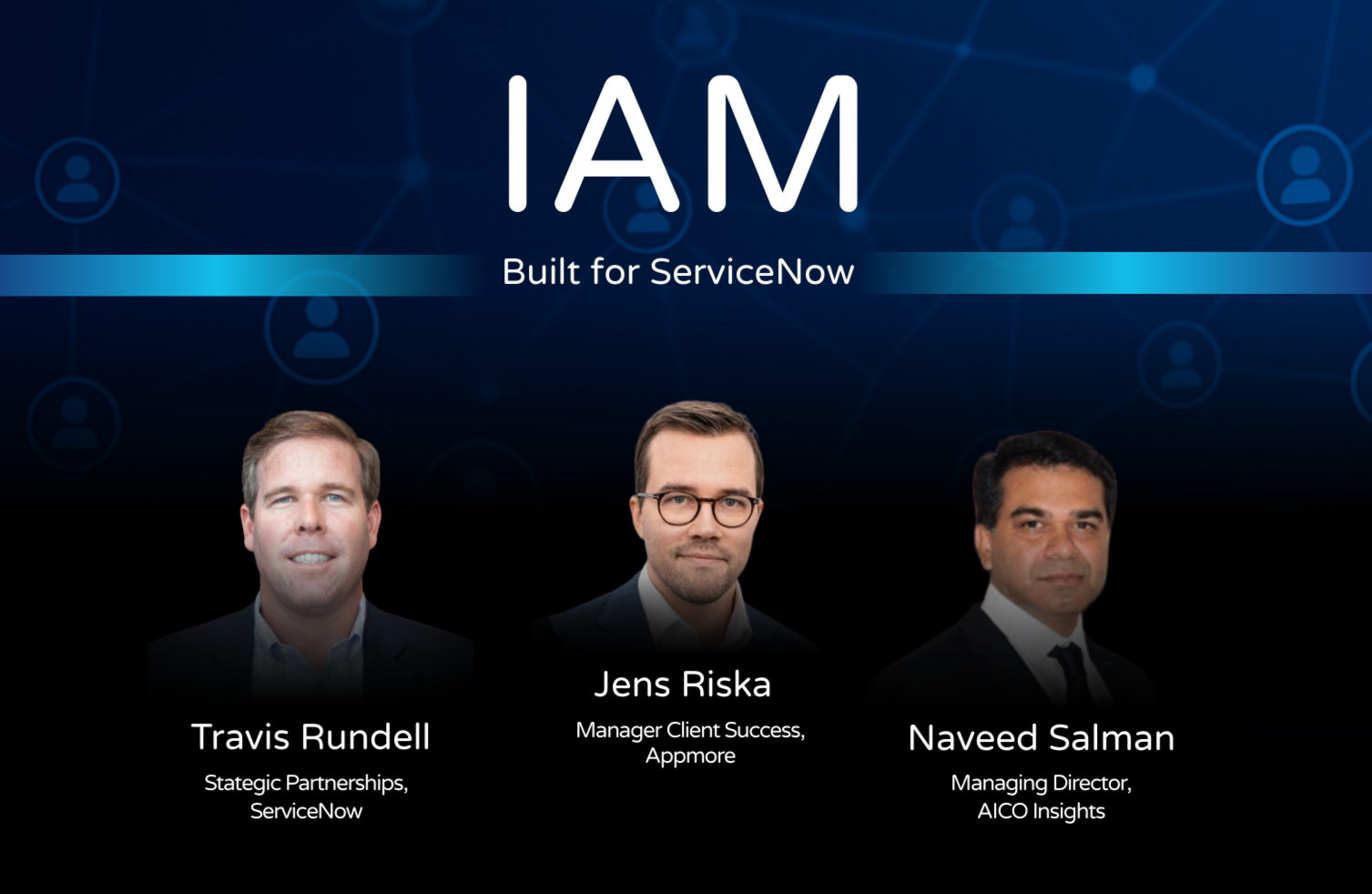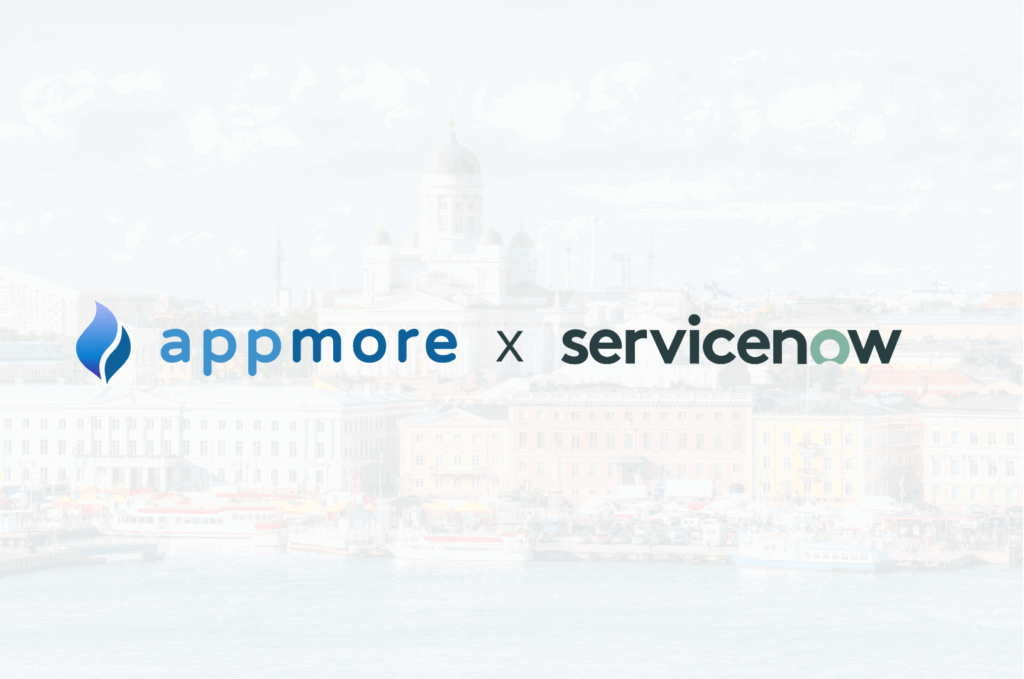Appmore’s ServiceNow-based IAM solution: Addressing Construction’s needs
Appmore, an enterprise solutions provider, offers an Identity & Access Management application built on the ServiceNow platform – a solution tailor-made to resolve the challenges we’ve outlined. Appmore’s ServiceNow IAM isn’t a generic one-size-fits-all product; it has been proven in real-world construction industry scenarios and engineered to meet both technical requirements and business objectives. For example, Skanska, one of Finland’s largest construction and development companies, turned to this solution when it needed to “remove manual processes” from IAM and integrate identity management into ServiceNow and other systems already in use.
The results for such companies have been compelling: By embedding IAM within ServiceNow’s powerful workflow engine, Appmore’s solution brings automation, unified processes, and scalability to organizations that once struggled with disjointed access controls.
Let’s analyze how this ServiceNow-based IAM solution delivers key benefits, its distinguishing features, and why it is particularly well-suited for large construction firms.
Technical Benefits: Automation, integration and scalability
From a technology standpoint, Appmore’s IAM application introduces much-needed automation and orchestration into identity workflows. Routine tasks like provisioning new user accounts, granting project-specific permissions, or disabling access for leavers are handled through ServiceNow’s workflow and Flow Engine, drastically reducing the need for manual intervention. In practice, this means when a new contractor is onboarded in the HR system, an automated flow can create their accounts and assign the correct roles across all required applications – no more waiting on IT to manually set things up. The ServiceNow IAM application automates request handling and provisioning to all systems, ensuring that even if you have dozens of back-end systems, access is granted (and later revoked) in a coordinated, speedy manner. This addresses the “slow and manual process” issue head-on: automation makes IAM faster, more consistent, and far less prone to human error.
Integration is another core strength. Being built on ServiceNow, the IAM solution natively integrates with the ServiceNow ecosystem (e.g. ITSM, CMDB, HR Service Delivery) and comes with a wide range of connectors for external systems. Out-of-the-box connectors cover popular enterprise tools – from Microsoft Active Directory (on-prem and Azure AD) to SAP ERP, Salesforce, Workday, Atlassian, and even industry-specific systems like Basware (procurement) or Movenium (construction workforce management). This extensive connector library means a construction firm can plug the IAM app into virtually all the technology they use, achieving a unified platform for identity governance. No more silos: whether a system is on-premises legacy or modern cloud SaaS, it can be tied into the centralized IAM workflows. The result is consistent enforcement of access policies and a single source of truth for user permissions across the organization. Furthermore, operating on ServiceNow’s cloud ensures scalability and reliability. ServiceNow is built to handle enterprise-scale operations, so adding hundreds or thousands of users and transactions won’t degrade performance – the IAM processes will scale with the business.
Appmore’s solution is part of the ServiceNow SaaS, which also means companies can reduce the number of separate IAM tools they require. There is no need for a standalone IAM infrastructure if you leverage the platform you already have; this consolidation saves on licensing, training, and maintenance costs. In short, the technical architecture of Appmore’s IAM offers a future-proof foundation: highly automated, deeply integrated, and capable of growing with the company’s needs.
Business benefits: Efficiency, security and compliance
While the technical improvements are impressive, what really matters to decision-makers are the business outcomes. Appmore’s ServiceNow IAM solution delivers significant benefits in terms of efficiency, security, and compliance – areas that directly impact the bottom line and risk profile of a construction enterprise.
Efficiency gains are among the first things companies notice. By cutting out manual steps, the IAM solution speeds up onboarding and changes, meaning employees and contractors get to work faster. This boost in productivity can be quantified: consider the cost of a highly paid engineer sitting idle for days waiting for access – automation eliminates such delays. One organization using Appmore’s IAM even automated over 50,000 identity and access requests in its first year, an indication of how much manual effort can be saved at scale. IT teams also see workload reduction; instead of firefighting access issues, they can focus on more strategic tasks. Indeed, automating IAM “saves unnecessary costs related to providing identities and access rights” by reducing IT workload. Fewer helpdesk tickets and fewer errors mean a leaner, more effective IT operation.
There’s also a positive impact on end-user satisfaction: with self-service portals and timely access, employees feel empowered and are less frustrated by bureaucracy. In the words of Appmore’s team, employees become more efficient and even happier as a result of smoother IT service processes. All of this translates into business agility – projects ramp up quicker and with less overhead.
On the security front, the ServiceNow IAM solution enforces best practices that dramatically reduce identity-related risks. All user access is governed and tracked centrally. The solution ensures that when someone leaves, their access is fully revoked across systems, closing the common security hole of lingering accounts. The importance of this can’t be overstated – it helps avoid scenarios where a former employee or contractor could still use old credentials to steal data or sabotage systems. Moreover, the principle of least privilege is easier to uphold: only users who truly need an access will have it, thanks to role-based provisioning and approval workflows. The IAM application provides different options for auditing access rights and quickly removing any unnecessary privileges from users, which both improves security and cuts license costs for unused software. Advanced features like access certification campaigns add another layer of security: managers can periodically review who has access to critical applications and attest that it’s still appropriate, with the system automating the reminders and tracking. If any red flags arise (say, a contractor still has access beyond their project), they can be promptly addressed. The result is a greatly lowered risk of internal misuse or outsider breach via compromised accounts.
Hand-in-hand with security is compliance. Appmore’s IAM solution was built with governance in mind, adding a robust administrative layer to identity management on ServiceNow. It provides extensive reporting through ServiceNow’s dashboards and analytics, giving auditors the transparency they demand. Whether it’s an internal audit or demonstrating compliance to external regulators, IT staff can readily pull reports of “who had access to what and when,” with full traceability. This makes passing audits far easier, avoiding the frantic scrambles that often accompany audit season when using manual processes. The system also supports enforcement of segregation of duties and other control policies – for example, it can flag or prevent toxic combinations of access (such as a user who can both approve and pay an invoice) to reduce fraud risks. By aligning with standards (the solution supports common compliance frameworks and even appears on Gartner Peer Insights for IAM), it helps construction firms uphold their regulatory obligations. Ultimately, by using an automated, well-documented IAM system, companies can demonstrate compliance with regulations like GDPR and industry standards, avoiding hefty fines and reputational damage. In summary, the business benefits manifest as lower costs, reduced risk, and higher confidence that the organization is secure and compliant – all of which are crucial selling points for any IT investment to C-level executives.


